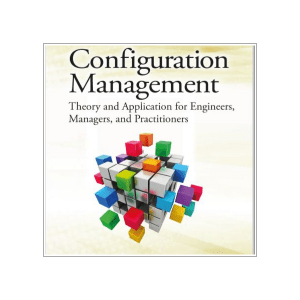Configuration Management, Tracking, and CyberSecurity
The Importance of Configuration Management and Asset Tracking in Cyber Security
The security of systems and networks is more crucial than ever. With the growing sophistication of cyber threats, businesses must adopt comprehensive strategies to protect sensitive information. Two key components of a robust cybersecurity strategy are configuration management and asset tracking. Together, these practices form the backbone of cyber security by ensuring systems are properly configured and all assets are accounted for and secure.
But what happens when one element of the security pipeline changes? In this blog post, we’ll explore the importance of configuration management and asset tracking, how they contribute to cyber security, and the risks of making changes to the security pipeline without thorough planning.
What Is Configuration Management?
Configuration management systematically handles system components, ensuring the interfaces remain updated and consistent, and that the software environments remain defined. This includes servers, network devices, and software applications (modules) to security settings and system dependencies. The goal is to reduce misconfigurations and inconsistencies that could expose vulnerabilities.
Configuration management tools are critical in maintaining this consistency. These tools automate and manage configurations, ensuring changes are logged and approved. Without these tools, organizations risk unmanaged and potentially insecure configurations that open systems to cyber attacks.
Asset Tracking: Knowing What You Own
Asset tracking involves keeping an organization’s real-time inventory of all IT assets, including hardware, software, and data. It helps organizations understand what assets are connected to the network and ensures they are updated, secure, and compliant with internal policies and regulations.
Cyber security relies heavily on accurate asset tracking. Without it, a company might not be aware of outdated or vulnerable systems lurking in the network. Furthermore, asset tracking enables identifying unauthorized devices, which could be potential entry points for cyber attackers.
The Connection to Cyber Security
Configuration management tools and asset tracking are directly tied to a business’s cyber security strategy. Organizations minimize the risk of security breaches by maintaining accurate configurations and tracking all assets. Here’s how they support cyber security:
- Preventing Unauthorized Changes: Configuration management ensures that only authorized personnel can change system settings, reducing the chance of introducing vulnerabilities. More importantly, it ensures that the system’s interfaces are recognized and controlled and its integrity is maintained.
- Ensuring Patch Management: Asset tracking ensures that every device and piece of software is up-to-date with the latest security patches, preventing exploitation of known vulnerabilities.
- Compliance and Auditing: Both practices are essential for regulatory compliance. They clearly record what assets are in use and how systems are configured, which can be crucial during audits.
- System Testing: To effectively test the system from end to end, we must understand the interfaces between hardware and software components. Many of these components may not be under our control, such as changes to APIs or other hardware and software components controlled by different suppliers of elements that comprise the system.
The Risks of Changing the Security Pipeline
One of the biggest challenges in maintaining a secure system is that even minor changes to the security pipeline can have ripple effects across the entire infrastructure. For example, changing a firewall rule, modifying server configurations, or updating software can introduce unexpected vulnerabilities if not properly managed.
Configuration management plays a crucial role in mitigating these risks. By providing visibility into past and current configurations, they help IT teams understand the implications of changes before they are implemented. However, without proper planning, a single change can lead to significant security gaps, including:
- Configuration Drift: When changes occur without consistent oversight, systems may diverge from their secure baseline configuration, leading to vulnerabilities.
- Service Downtime: Uncoordinated changes can cause system conflicts, resulting in downtime (some parts of the system not working) and loss of productivity.
- Increased Attack Surface: New or misconfigured components can expose the network to new cyber threats, making it easier for attackers to breach the system.
Conclusion: Securing the Future with Configuration Management and Asset Tracking
Effective configuration management and asset tracking are indispensable to maintaining cyber security in a rapidly evolving digital world. Configuration management tools ensure that systems are correctly configured and aligned with security policies, while asset tracking helps keep all IT components accounted for and secure. Together, they provide a solid foundation for a comprehensive cybersecurity strategy.
As organizations grow their digital infrastructure, they must carefully manage their security pipeline. Any changes should be deliberate, well-documented, and properly tested to avoid creating new vulnerabilities that could compromise the entire system.
For more information, contact us
Follow us on social media at:
Amazon Author Central https://www.amazon.com/-/e/B002A56N5E
LinkedIn: https://www.linkedin.com/in/jonmquigley/


